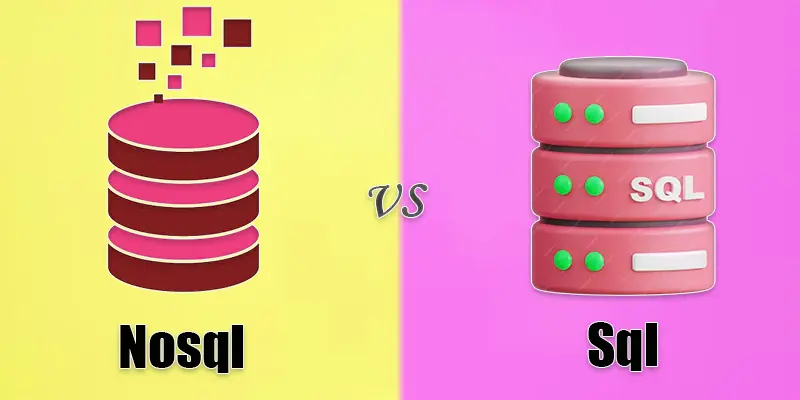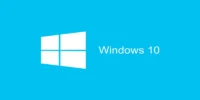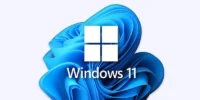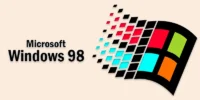NoSQL vs SQL | Key Differences, When to Use, Examples, and Pros & Cons
Published: 18 May 2025
Nosql vs SQL
Databases power almost every digital system, but choosing between Nosql and SQL can be confusing. NoSQL databases manage unstructured data, which makes them perfect for social media or large data, while SQL databases employ organized tables and are excellent for financial transactions. Have you ever struggled to scale your database as your data grows? Many businesses face slow performance with SQL or inconsistent data handling with Nosql. Whether you’re managing a small app or a large enterprise system, understanding Nosql vs SQL helps you choose the right database for your needs.
What is SQL?
A common language for managing, retrieving, and storing data in relational databases is called SQL (Structured Query Language). It ensures consistency and convenient access by arranging data into organized tables with rows and columns. SQL gives users the ability to easily input, update, delete, and query data.
Example
A company uses SQL to store employee records, including names, salaries, and job positions.
What is Nosql?
Databases that store and manage data without a set table structure are known as Nosql (Not Only SQL) databases. Large volumes of unstructured or semi-structured data can be handled using it. For contemporary applications like social networking, real-time analytics, and massive data processing, Nosql databases provide flexibility, scalability, and speedier performance.
Example
Social media platforms like Facebook use Nosql to store and manage user posts, comments, and messages efficiently.

Key Differences Between SQL and Nosql
| SQL Databases | NoSQL Databases |
|---|---|
| Table-based (rows & columns) | Flexible (documents, key-value, graph, column) |
| Fixed schema required | Dynamic schema |
| Vertical (single server) | Horizontal (multiple servers) |
| Structured data only | Structured, semi-structured, unstructured |
| Uses SQL (Structured Query Language) | Uses various models (JSON, key-value, etc.) |
| Strong ACID compliance | Follows CAP theorem (trade-offs in consistency) |
| Banking, finance, ERP systems | Big data, real-time applications |
| Slower for large, complex queries | Faster for large-scale distributed data |
| Rigid data structure | Highly flexible |
| Supports complex joins | No joins, uses denormalization |
| Expensive scaling (hardware upgrades) | Cost-effective horizontal scaling |
| Master-slave replication | Sharding and distributed replication |
| High data consistency | Eventual consistency (in most cases) |
| Relational table storage | Document, key-value, graph, or column-based storage |
| MySQL, PostgreSQL, SQL Server | MongoDB, Cassandra, Redis |
| Not optimized for big data | Designed for big data and real-time analytics |
| Uses structured queries (SQL) | Uses flexible querying (JSON, key-value, etc.) |
| Varies based on Nosql type | Faster due to flexible schema |
| Easier to learn for beginners | Complex backup strategies are required |
| Built-in backup tools | Complex backup strategies required |
When to Use SQL vs Nosql?
Use SQL When
- Your data is structured and follows a fixed schema.
- You need strong consistency and accurate transactions (e.g., banking, e-commerce).
- Complex queries and relationships between data are required.
- Example: A retail store using SQL to track inventory and customer purchases.
Use Nosql when
- Your data is unstructured or semi-structured and needs flexibility.
- You need high scalability for large and fast-growing data (e.g., social media, Iot).
- You prioritize speed and availability over strict consistency.
- Example: Facebook uses Nosql to store user posts and activity feeds.

Real-Life Examples of Nosql vs SQL
SQL Examples
- Banking Systems – Tracks transactions and customer accounts securely.
- E-commerce Stores – Manages product inventory, orders, and payments.
- Hospital Databases – Stores patient records and appointment schedules.
- School Management Systems – Keeps student grades, attendance, and courses.
Nosql Examples
- Social Media Platforms – Stores user posts, likes, and comments (e.g., Facebook).
- Streaming Services – Manages video recommendations and watch history (e.g., Netflix).
- Iot Data Storage – Handles sensor data from smart devices (e.g., smart home systems).
- Gaming Applications – Stores player profiles, scores, and real-time game data.
Pros and Cons of SQL and Nosql
Pros of SQL
- Structured and Reliable – Uses a fixed schema for organized data.
- Strong Consistency – Follows ACID properties for accurate transactions.
- Powerful Queries – Supports complex data relationships and joins.
Cons of SQL
- Less Scalable – Struggles with large, fast-growing data.
- Rigid Structure – Schema changes can be difficult.
- Performance Issues – Slows down with heavy read/write operations.
Pros of Nosql
- Highly Scalable – Grows easily with increasing data.
- Flexible Structure – Handles unstructured and semi-structured data.
- Faster Performance – Quick data access for big applications.
Cons of Nosql
- Less Consistency – Trades strict ACID compliance for speed.
- Limited Complex Queries – Doesn’t support advanced joins like SQL.
- Varied Standards – Different Nosql databases have unique models.

Conclusion About SQL vs Nosql
We’ve covered Nosql vs SQL in detail. If you need structured data and strong consistency, go with SQL, but if you want flexibility and scalability, Nosql is a better choice. Personally, I recommend SQL for businesses that rely on accuracy, like banks, and Nosql for dynamic apps, like social media platforms. The right choice depends on your project needs, so evaluate carefully. Let me know in the comments which database you prefer!
FAQS: Nosql vs SQL Databases
Use SQL when you need structured data, complex queries, and strong consistency, like in banking or e-commerce. For managing massive, unstructured, or dynamic data, such as in social media or real-time analytics, use Nosql. The best choice depends on your project’s needs.
Nosql is usually faster for big data and real-time applications because it doesn’t rely on complex queries. SQL can be slower when handling large volumes of unstructured data, but performs well for structured data and relationships. Speed depends on the use case and database design.
Mongodb is a Nosql database that works well with dynamic applications because it stores data as adaptable documents that resemble JSON. It scales easily and works well with large, fast-growing datasets. SQL is better for structured data with strict relationships, like financial records.
Mongodb is one of the most popular Nosql databases due to its document-based model and scalability. Other popular Nosql databases include Cassandra (used for big data), Redis (fast key-value storage), and Dynamodb (AWS-based). Each has its strengths based on the use case.
Nosql databases are used by tech giants like Facebook, Google, and Amazon to handle vast amounts of unstructured data. Streaming services like Netflix and e-commerce platforms like eBay also rely on Nosql for scalability. Many startups and businesses use Nosql for real-time analytics and big data processing.

- Be Respectful
- Stay Relevant
- Stay Positive
- True Feedback
- Encourage Discussion
- Avoid Spamming
- No Fake News
- Don't Copy-Paste
- No Personal Attacks

- Be Respectful
- Stay Relevant
- Stay Positive
- True Feedback
- Encourage Discussion
- Avoid Spamming
- No Fake News
- Don't Copy-Paste
- No Personal Attacks





